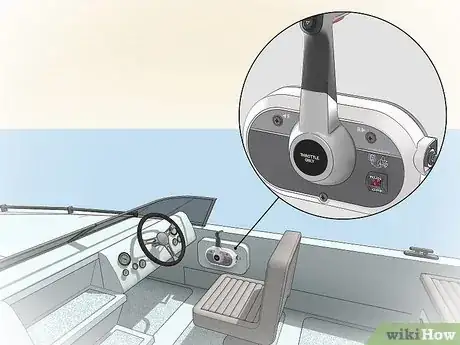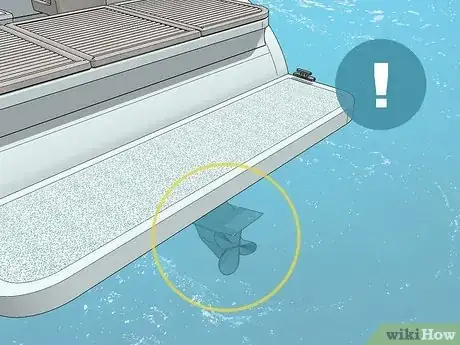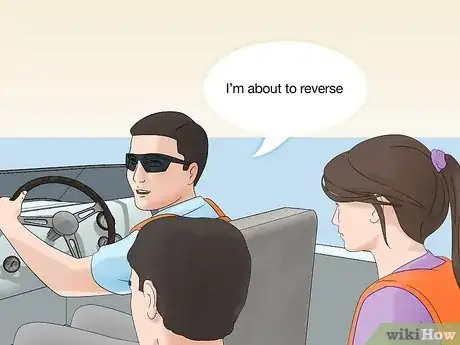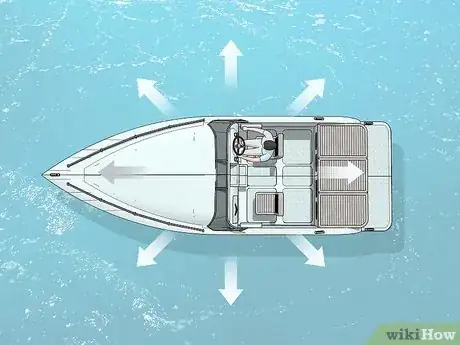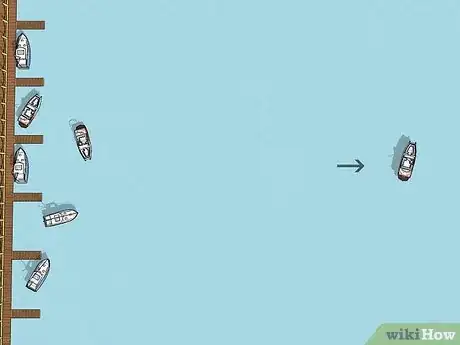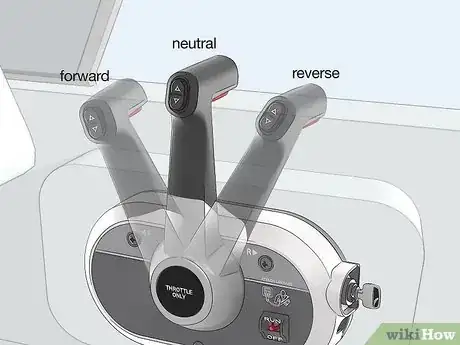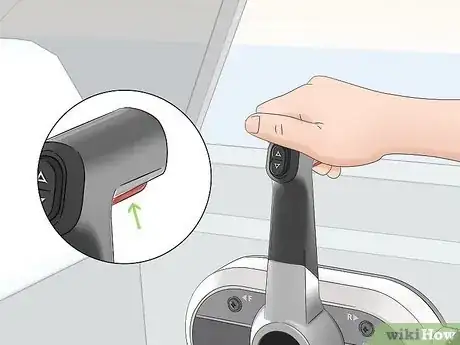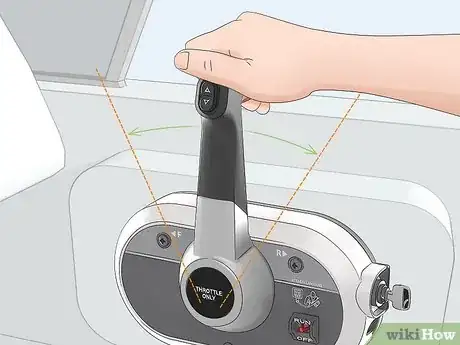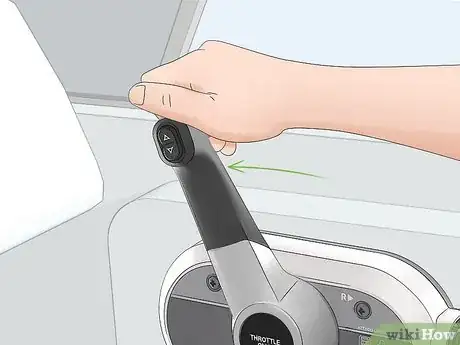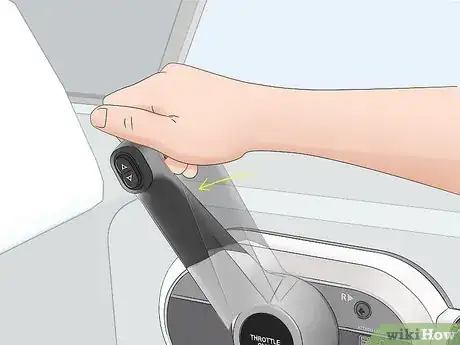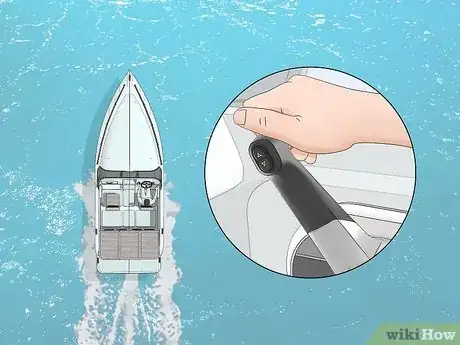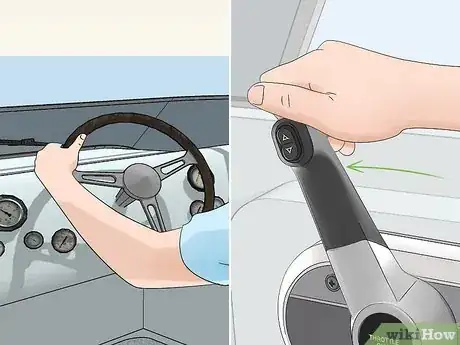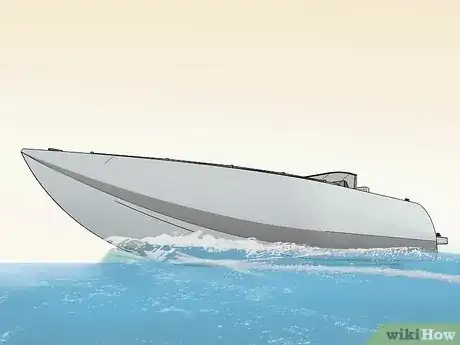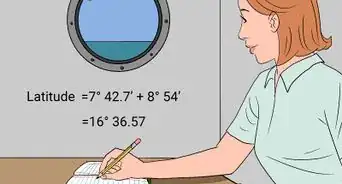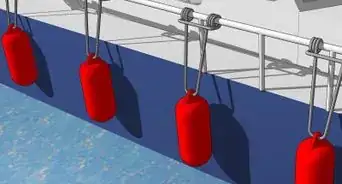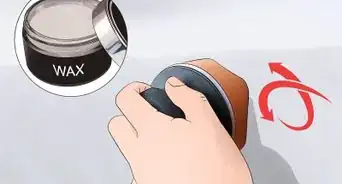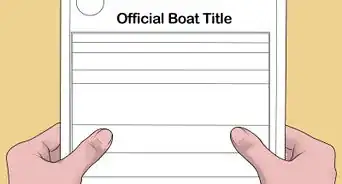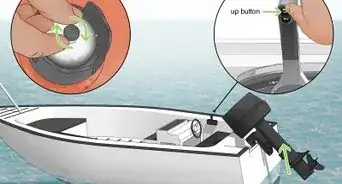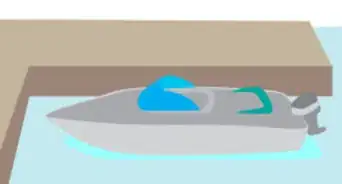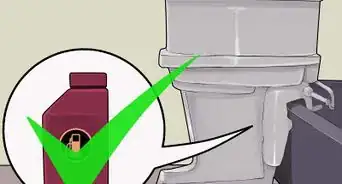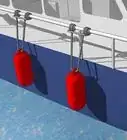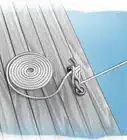X
wikiHow is a “wiki,” similar to Wikipedia, which means that many of our articles are co-written by multiple authors. To create this article, 11 people, some anonymous, worked to edit and improve it over time.
This article has been viewed 86,319 times.
Learn more...
Shifting can be easy once you know the basics and have practiced a little. Mercruiser shifters have some features that you need to know. There are several different models and styles of Mercruiser remote controls. These instructions/tips are for a standard later-model top mount or panel mount Mercruiser remote control.
Steps
-
1Look your remote control over before starting the motor.[1]
- Get familiar with the handle and its Locking Mechanism.
- Check out the Neutral Detent Button and trim buttons (if so equipped).
-
2Think before you shift. Safety is a major concern. Once you shift, the propeller will start to spin. A spinning propeller can injure or kill a person or pet.Advertisement
-
3Never start the motor when a swimmer is in the water near your boat.
-
4Let all your passengers know that you are about to shift into forward or reverse.
-
5Look around your boat before shifting.
-
6Plan ahead. Is all clear?[2]
-
7When practicing shifting make sure your vessel is clear of all vessels and obstructions at sea or firmly tie your vessel to a strong dock with several adequate lines.
-
8Use the control handle to both SHIFT and ACCELERATE. The handle has three shift positions or "DETENTS". FORWARD--NEUTRAL--REVERSE. Usually the handle is straight UP for NEUTRAL.
-
9Start your motor with the handle in the NEUTRAL (up) position. Note: Most remote controls are equipped with an In-Gear-Starter-Protection-Switch. This switch should prevent the motor from starting if the shifter is in gear. If the motor won't crank make sure your shifter handle is in neutral.[3]
-
10Place your hand on top of the handle. Under the handle your fingers should feel the Shift Locking Mechanism. This Locking Mechanism must be lifted with your fingers before attempting to shift. Note: If you shift past the forward detent the engine will accelerate and the boat will move forward faster. This is called "throttling" and it should never be done while tied up to a dock. Only throttle up if you are untied and ready to proceed forward.
-
11For practicing purposes only advance the handle to the initial DETENT position.
-
12To SHIFT INTO FORWARD, lift the Locking Mechanism with your fingers and then you push the handle forward with a firm positive motion until you "feel" the FORWARD DETENT. Do not shift too slow or the gears will grind.
-
13Practice shifting into and out of forward gear making sure to lift the locking mechanism and to use a firm action.[4]
-
14Practice shifting from neutral into reverse by pulling the handle back into the reverse detent position.[5]
-
15If you are at sea and clear of all vessels, shift into forward detent and let the boat "idle" forward for a little while. Take a good look all around your vessel to make sure that it is safe to accelerate and throttle up.
-
16Slowly push the handle forward and accelerate the vessel while steering and using all precaution.
-
17As you accelerate and push the handle forward the bow bow of most boats will rise up and you will make a large wake. Eventually, as the boat speeds up the bow will drop down and the boat will "plane-off" and ride fast on top of the water. To slow down, slowly pull back on the handle little by little until the boat drops off-plane and returns to in-gear idle. Do not shift into neutral until the boat has slowed way down to the idle speed. Remember to ONLY SHIFT at dead idle speed.
Advertisement
Community Q&A
-
QuestionCan I change from forward to reverse while in motion?
 Community AnswerIt's fine if you are going in slow motion or drifting. Do not shift while underway at speeds greater than 4 or so knots.
Community AnswerIt's fine if you are going in slow motion or drifting. Do not shift while underway at speeds greater than 4 or so knots. -
QuestionWhat causes my boat engine to cut off when I shift it into forward or reverse?
 Community AnswerLots of factors can cause this, but it's possible that the engine could be too small for your vessel.
Community AnswerLots of factors can cause this, but it's possible that the engine could be too small for your vessel. -
QuestionWhat in the shifter actually moves the cutout switch on mericrusior applications?
 Community AnswerThe shifter does not move the cutout switch. Loading of the gears in the lower unit and/or any stiffness or drag in the lower shift cable will activate the cutout (shift interrupter) switch.
Community AnswerThe shifter does not move the cutout switch. Loading of the gears in the lower unit and/or any stiffness or drag in the lower shift cable will activate the cutout (shift interrupter) switch.
Advertisement
Warnings
- Never leave the helm while in gear.⧼thumbs_response⧽
- Never start the motor with the stern drive tilted too high. It is usually a good idea to make sure the stern drive unit is in the full DOWN position before starting the vessel.⧼thumbs_response⧽
- Shift at dead idle speed.⧼thumbs_response⧽
- Use your safety lanyard chord.⧼thumbs_response⧽
- Never start or run the engine with swimmers in the water or on the dive platform.⧼thumbs_response⧽
- Never shift while the boat is "under way" above idle speed or damage can occur to your stern drive.⧼thumbs_response⧽
- Never shift "through neutral" into the other gear. In other words, let the shifter sit in neutral before proceeding to the other gear. For example, if you are in forward gear, do not yank the handle all the way back into the reverse gear. This can damage your gear unit (stern-drive).⧼thumbs_response⧽
- Think safety first.⧼thumbs_response⧽
- Read the Owner's Manual.⧼thumbs_response⧽
Advertisement
References
- ↑ https://www.mercurymarine.com/en/asia/gauges-and-controls/single-engine-controls/
- ↑ https://www.sailorsforthesea.org/programs/green-boating-guide/reduce-fuel-usage
- ↑ https://www.youtube.com/watch?v=DSp9dVtG_ww
- ↑ https://www.boatus.com/magazine/2014/december/getting-your-boat-in-gear.asp
- ↑ https://www.boatus.com/magazine/2014/december/getting-your-boat-in-gear.asp
- Read more at Sterndrives.Com
About This Article
Advertisement
